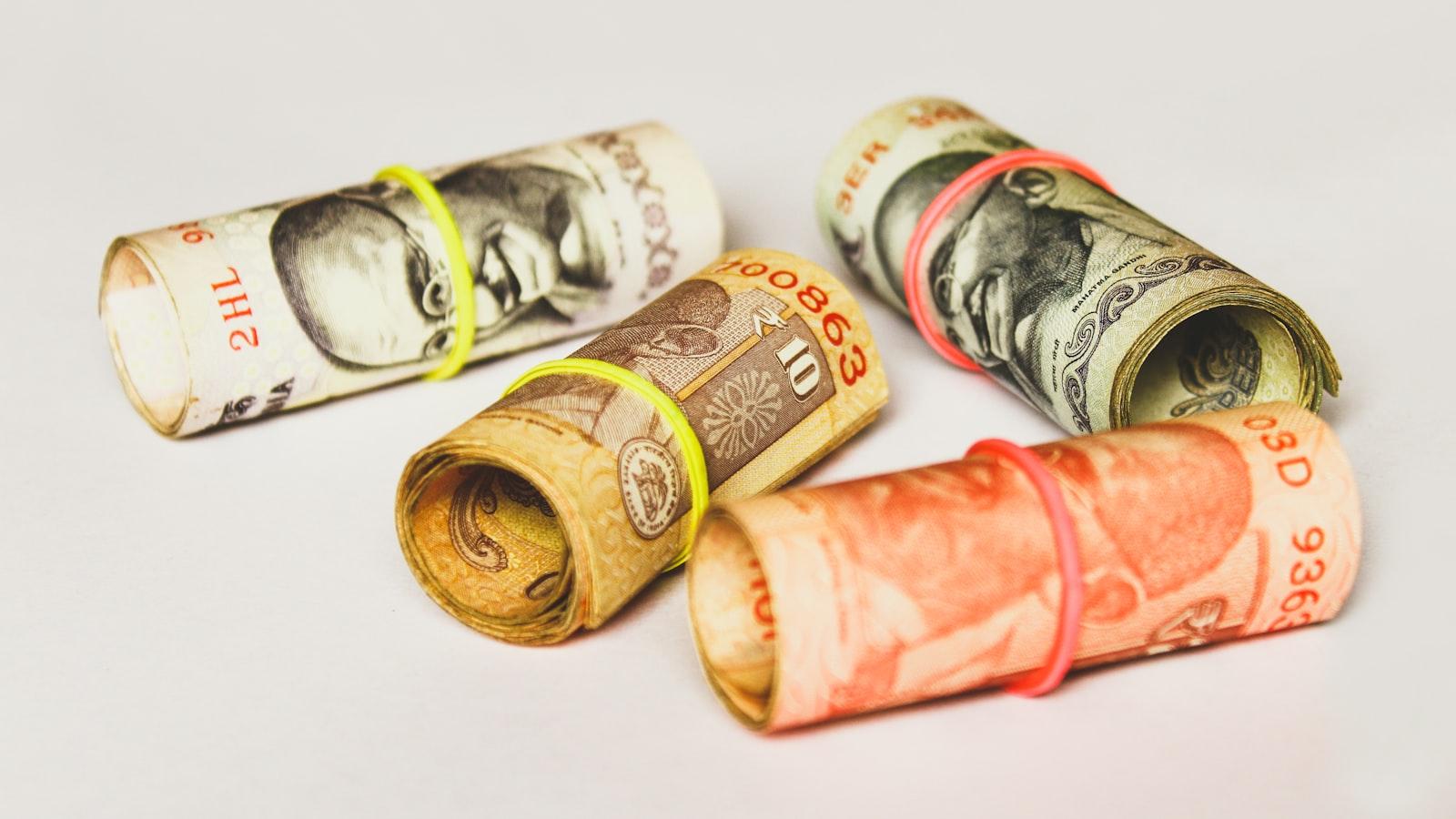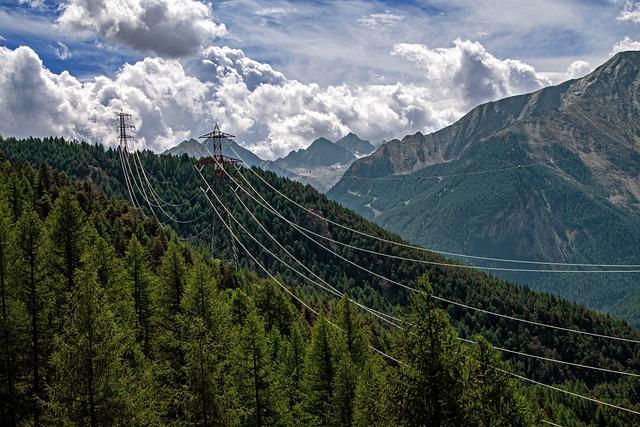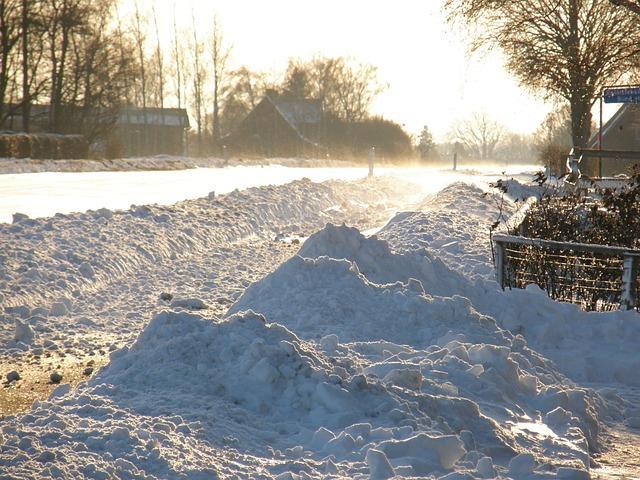Trees are not only vital to our environment and health, but they also hold significant economic value. From providing raw materials and products, to offering economic benefits through carbon sequestration and energy savings, trees play a crucial role in sustaining our economy. This article explores the various ways in which trees contribute to our financial well-being, highlighting their importance in shaping a sustainable and prosperous future.
Table of Contents
- Benefits of Trees to Local Economies
- The Role of Trees in Property Value
- The Financial Impact of Urban Forestry Programs
- Maximizing Economic Returns through Sustainable Tree Management
- Investing in Trees for Long-Term Economic Growth
- Q&A
- Conclusion
Benefits of Trees to Local Economies
One of the key is their ability to attract tourism. Tourists are drawn to areas with lush greenery, scenic landscapes, and vibrant urban forests. This influx of visitors can bring in additional revenue for local businesses, such as hotels, restaurants, and shops, boosting the overall economic activity in the area.
Furthermore, trees contribute to increased property values in neighborhoods and cities. Homes located near well-maintained green spaces and tree-lined streets are often more desirable and can command higher selling prices. This leads to a stronger tax base for municipalities, which can then be reinvested back into the local community for infrastructure improvements, public services, and other beneficial programs.
Additionally, the shade provided by trees can help reduce energy costs for homeowners and businesses. By shading buildings from the sun, trees can lower cooling costs in the summer months, resulting in savings on electricity bills. This cost-saving measure can have a positive impact on individual households and businesses, freeing up funds for other purposes.
The Role of Trees in Property Value
One often overlooked aspect of property value is the presence of trees. Trees can have a significant impact on the economic value of a property, both in residential and commercial settings. Here are some key points to consider:
- Trees can increase property value by up to 15%. A well-landscaped property with mature trees can attract potential buyers and renters, leading to higher sale prices and rental rates.
- Shade provided by trees can reduce cooling costs in the summer, leading to energy savings for property owners. This can be especially beneficial for commercial properties with large parking lots or outdoor spaces.
- Trees can improve the aesthetics of a property, making it more visually appealing and inviting. This can have a positive impact on curb appeal and overall perceived value.
| Benefit | Impact |
|---|---|
| Increased property value | Up to 15% |
| Energy savings | Reduced cooling costs |
| Improved aesthetics | Enhanced curb appeal |
The Financial Impact of Urban Forestry Programs
Urban forestry programs have a significant financial impact on communities, providing both tangible and intangible economic benefits. Trees in urban areas contribute to property value appreciation, energy savings, and improved air quality, among other advantages. These programs not only enhance the aesthetic appeal of a city but also play a crucial role in maintaining a healthy and sustainable environment.
Some key ways in which urban forestry programs generate economic value include:
- Reduction in heating and cooling costs for buildings through shade provided by trees
- Increased foot traffic and spending in commercial areas with tree-lined streets
- Decrease in stormwater runoff and associated infrastructure costs through tree canopy interception
| Financial Impact | Value |
|---|---|
| Property Value Appreciation | $1,000-$10,000 per tree |
| Energy Savings | Up to 25% decrease in heating and cooling costs |
| Air Quality Improvement | Reduction in healthcare costs related to air pollution |
Maximizing Economic Returns through Sustainable Tree Management
One of the key aspects of sustainable tree management is understanding the economic value that trees can provide. Trees offer a wide range of economic benefits, including increased property values, energy savings, and reduced stormwater runoff. By implementing sustainable tree management practices, such as proper tree planting and maintenance, landowners can maximize these economic returns.
When it comes to , it is important to consider the long-term benefits that trees can provide. Trees not only offer immediate economic value through increased property values, but they also provide ongoing benefits such as shade, which can help reduce cooling costs in the summer. Additionally, trees play a crucial role in sequestering carbon dioxide, which can help combat climate change.
Investing in Trees for Long-Term Economic Growth
When it comes to long-term economic growth, investing in trees can yield significant benefits for both the environment and the economy. Trees play a crucial role in providing various ecosystem services that contribute to sustaining life on earth. In addition to their environmental benefits, trees also have significant economic value that can positively impact local communities and economies.
Here are some key reasons why investing in trees is essential for long-term economic growth:
- Carbon Sequestration: Trees help absorb carbon dioxide from the atmosphere, mitigating the impact of climate change and reducing greenhouse gas emissions.
- Timber Production: Trees are a valuable source of timber and wood products, contributing to the forestry industry and creating jobs in sectors such as logging and manufacturing.
- Tourism and Recreation: Tree-lined streets, parks, and forests attract tourists and outdoor enthusiasts, boosting local economies through increased spending on accommodations, activities, and attractions.
Q&A
Q: What is the economic value of trees?
A: Trees provide numerous economic benefits such as carbon sequestration, air purification, and increased property values.
Q: How do trees improve air quality?
A: Trees absorb harmful pollutants from the air and release oxygen, improving overall air quality in urban areas.
Q: What role do trees play in reducing energy costs?
A: By providing shade in the summer and windbreaks in the winter, trees can help reduce the need for air conditioning and heating, ultimately lowering energy costs.
Q: How do trees contribute to the economy through tourism?
A: Trees and forests attract tourists seeking outdoor recreational activities such as hiking, camping, and birdwatching, which in turn boosts local economies through increased spending.
Q: What is the economic impact of deforestation?
A: The destruction of forests not only leads to loss of biodiversity and ecosystem services but also has negative economic implications such as reduced carbon sequestration and increased flood and erosion risks.
Q: How can we quantify the economic value of trees?
A: Economic valuation methods such as cost-benefit analysis, contingent valuation, and market pricing can be used to assess the economic benefits provided by trees and forests.
Q: What are some practical ways to protect and enhance the economic value of trees?
A: Implementing sustainable forestry practices, promoting tree planting initiatives, and increasing public awareness about the importance of trees can help protect and enhance their economic value for future generations.
Conclusion
In conclusion, trees provide a multitude of economic benefits that often go unrecognized. From enhancing property values to reducing energy costs and boosting tourism revenue, the economic value of trees cannot be overstated. It is crucial for policymakers, businesses, and individuals to recognize and invest in the preservation and maintenance of trees in order to continue reaping their numerous economic rewards in the long term. By understanding and valuing the economic contributions of trees, we can work towards a more sustainable and prosperous future for all.
Simpsons Tree Services, Servicing Melbourne’s North Eastern Suburbs
Book a quote online at www.simpsonstrees.com.au




